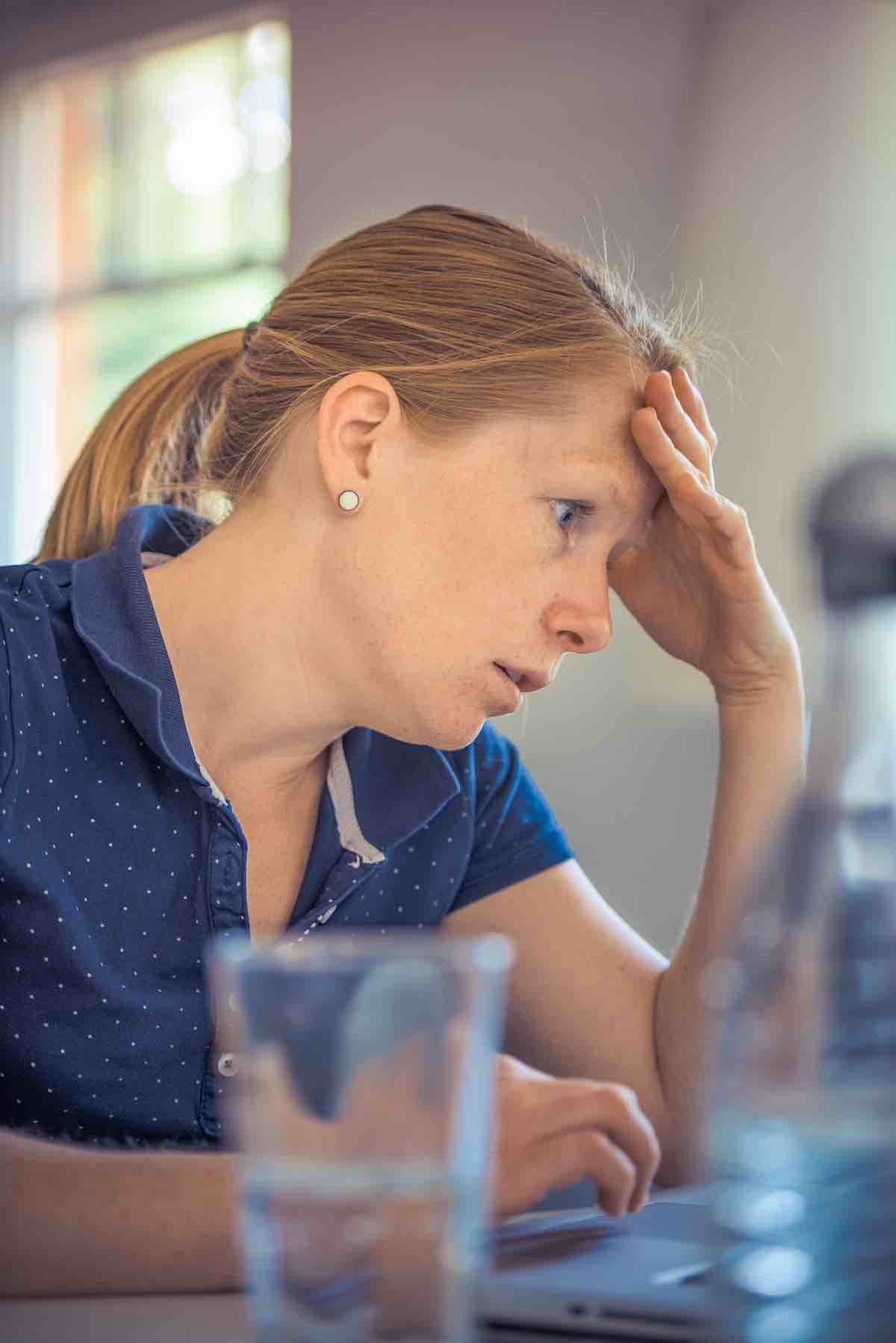Improving iron stores can fix hair loss
It took forever, but I finally determined that for me, like for many women, iron stops hair loss. It’s a strategy that has worked — for me anyway — and has put an end to more than 25 years of dealing with hair loss. The good news is taking iron supplements is a simple, inexpensive and effective way to manage hair loss. I just wish I’d found out about it years earlier.
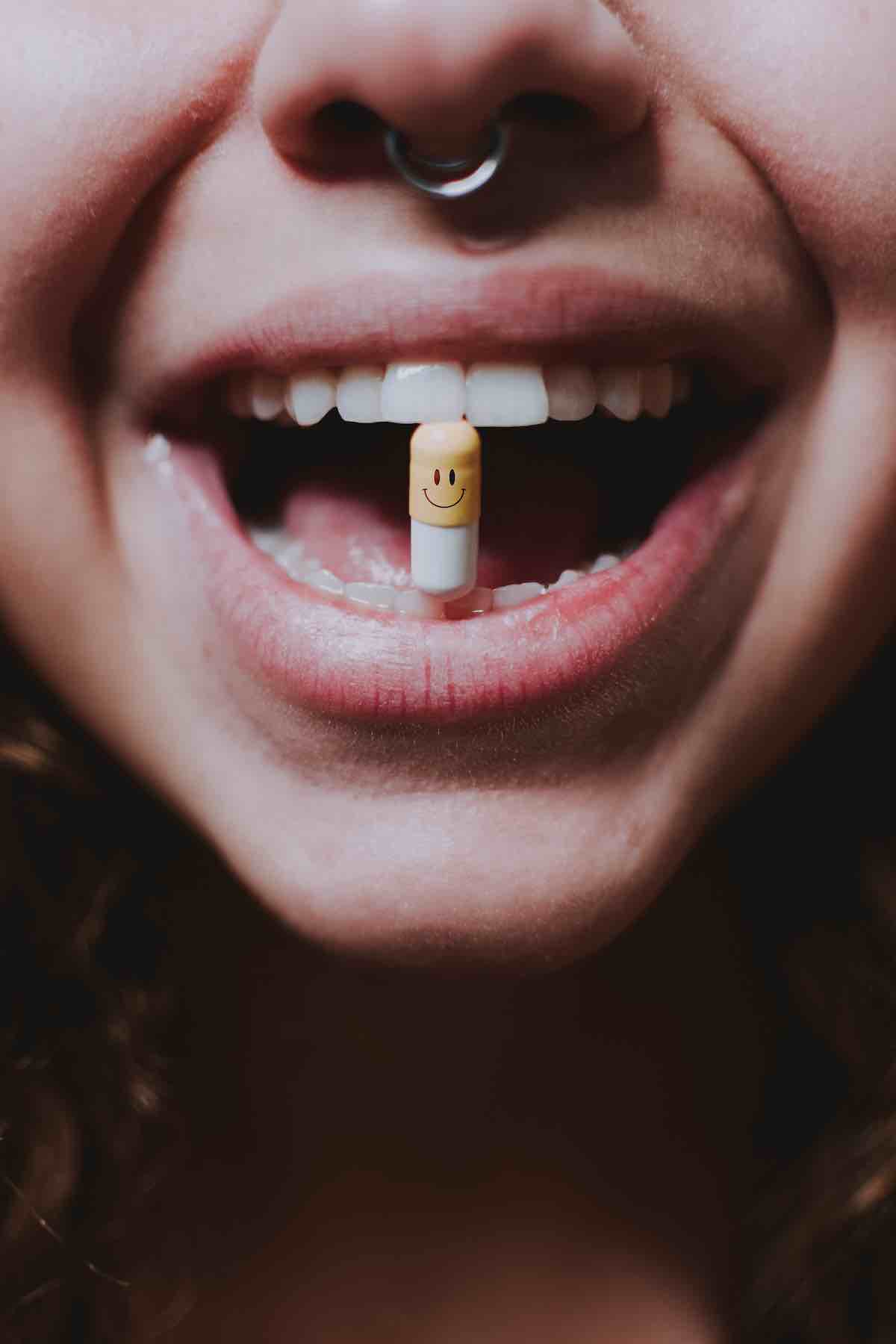 Hair loss has been a part of my life for almost as long as I can remember. The last time I remember having thick, full hair is when I was in my late teens. By the time I hit my early 20s, my hair was noticeably thinning. I didn’t think about it too much until someone pointed out how they could see my scalp through my hair. Ouch.
Hair loss has been a part of my life for almost as long as I can remember. The last time I remember having thick, full hair is when I was in my late teens. By the time I hit my early 20s, my hair was noticeably thinning. I didn’t think about it too much until someone pointed out how they could see my scalp through my hair. Ouch.
That was the beginning of a decades-long journey to find some way to stop hair loss. It’s only been after this long that I’ve found a strategy that works for me, and that has resulted in visible new hair growth for the first time in years.
For me, iron stops hair loss. I hope it can work for you, too.
Diagnosing The Cause of Hair Loss
I really resisted seeing a doctor about my hair less when it first became noticeable. I was in my early 20s, and the blow to my confidence was huge. Dealing with hair loss made me cranky, irritable, sad and stressed. Which — in turn — surely increased the hair loss.
I was in my mid 20s before I finally went to see a doctor to find a way to stop hair loss. It took me that long to get over my embarrassment. Going to the doctor meant I had to acknowledge I had a problem, instead of trying to ignore it.
I had the routine testing, and all my hormone levels came back fine. My thyroid was functioning fine as well — no indications of a thyroid problem that could lead to hair shedding.
There was nothing to indicate a cause for my hair loss — though I now realize that’s because they weren’t looking in the right places. And honestly? While my hair loss was devastating to me, personally, I don’t think the doctor (a dermatologist) cared much at all.
She sent me on my way with a prescription for Rogaine. I was a dutiful patient, and tried it for the better part of a year as a way to stop hair loss. I didn’t notice any regrowth, or any significant reduction in shedding, but I found Rogaine messy to use. It left my already thin hair even more lank and lifeless and was quickly relegated to the back of the bathroom cabinet.
Camouflage as a Hair Loss Strategy
After my disappointing experience with Rogaine and my doctor, I basically resigned myself to living with a thin scalp. Most of my hair loss was at the top of my head — think male pattern balding — and I used perms, hair colors, hennas and back-combing to disguise it as much as possible. I dreaded every trip to the hair stylist, where I would have to explain the thin patch at the top of my crown. And I became a slave to hair styles that hid my hair thinning as much as possible.
I was the Queen of Headbands.
Putting the Pieces Together
My hair loss was pretty stable for most of my 30s and early 40s. I continued to have to disguise the thin areas, but there were no major incidents of hair loss. I tried various natural remedies to stop hair loss along the way — I’m assuming they helped a bit. My hair didn’t fall out in clumps, it wasn’t clogging the drains and I didn’t find it all over the house.
It wasn’t perfect, but the hair loss was manageable.
That changed by the time I hit my mid 40s.
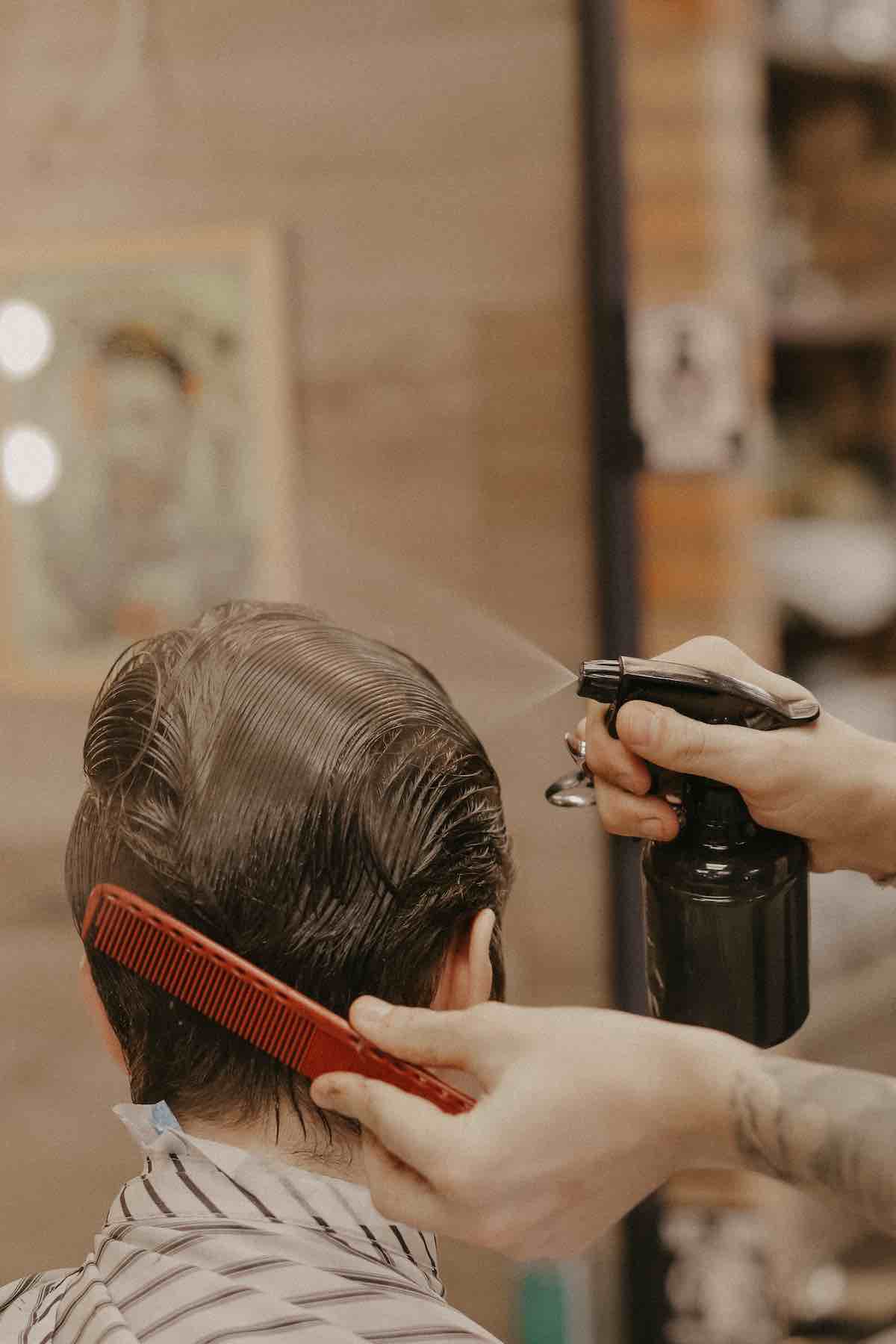 I started to find hair everywhere. On my clothes, in the sink, clogging the drains, on my pillow — everywhere you could shed hair. I began obsessively counting the hair in the drain after I shampooed — when I hit 120 hairs at one go I honestly felt sick to my stomach. The sense of panic was pretty overwhelming. As was the need to find a solution to stop hair loss. I don’t consider myself a very vain person, but the prospect of losing all my hair was beginning to overwhelm me. Irritability became a huge problem, and I was stressed, depressed and overwhelmed.
I started to find hair everywhere. On my clothes, in the sink, clogging the drains, on my pillow — everywhere you could shed hair. I began obsessively counting the hair in the drain after I shampooed — when I hit 120 hairs at one go I honestly felt sick to my stomach. The sense of panic was pretty overwhelming. As was the need to find a solution to stop hair loss. I don’t consider myself a very vain person, but the prospect of losing all my hair was beginning to overwhelm me. Irritability became a huge problem, and I was stressed, depressed and overwhelmed.
Hair Loss Strategies
At this point, I got aggressive in finding ways to stop hair loss. I saw my doctor again — all test results were normal. I tried every approach I could think of, including:
- Vitamin supplements
- Nizoral dandruff shampoo
- Taking Iodine drops to boost my thyroid
- B12 supplements
- Hair-loss specific supplements like Bio-Regrow
- Nioxin shampoos and conditioners
- A laser comb to reduce hair loss and make the hair look fuller
I cut down on my sugar intake, used yoga and meditation to reduce stress. Some of these things seemed to help — of them all, I put most faith in the laser comb, the B12 supplements and the Nizoral shampoo.
At a low point, I started to pour over my medical records. I’ve always been low iron, and have been anemic several times in my life. But none of my doctors had ever raised this as a problem, or as a possible reason for my hair loss. If they had told me iron stops hair loss, I would have been saved literally decades of anxiety.
Iron Stops Hair Loss: How It Worked For Me
With no other options open to me, I started to get serious about raising my iron levels was a way to stop hair loss. At my lowest point, my ferritin was 21ug/L. But here’s the kicker — my iron levels were never abnormal. Every time I was tested, I fell into the normal range — here in Canada, that’s 13 to 375 ug/L.
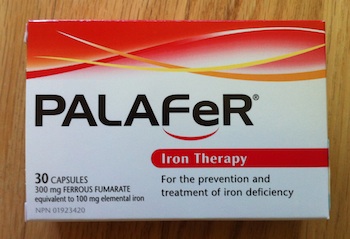 I made half-hearted attempts at various times to boost my iron, but the highest I ever got was to 44 ug/L. It was only after extensive reading online that I learned my iron levels would likely have to be 70 ug/L or higher if I were ever to see noticeable regrowth. Not one of my doctors ever told me that. I began a highly focused campaign to stop hair loss.
I made half-hearted attempts at various times to boost my iron, but the highest I ever got was to 44 ug/L. It was only after extensive reading online that I learned my iron levels would likely have to be 70 ug/L or higher if I were ever to see noticeable regrowth. Not one of my doctors ever told me that. I began a highly focused campaign to stop hair loss.
With the advice of my doctor, I began taking three Palafer supplements each day. Each pill contains 100 mg of elemental iron. We’re only supposed to need 18 mg of iron per day, so I was taking something like 15 times the recommended daily dosage. If iron stops hair loss, I was determined to give it my best shot! I’d taken Palafer in the past, but I’d never been that diligent, This time, I got focused. In a little more than three months, I raised my iron levels from 21 ug/L to 89 ug/L.
It was at about the second month that I started to notice the regrowth — that was a happy day! It was hard to see, but when I parted my hair and examined my part line closely in the mirror, I could see all these tiny little hairs sprouting up, maybe 1/8 or an inch long, but they were there and they were growing! I began to believe I’d found a solution.
While the hair loss has backed off a bit, I am still seeing more shedding than I would like. Probably 75 hairs a day, at least. It’s better than it was — and it’s within “normal” ranges — but I still want there to be less hair loss. My doctor has suggested I aim for a level of 110 ug/L, but I’m going to continue with my aggressive iron supplementation until I see a dramatic decrease in hair loss. I know that it is possible to reach toxic levels of iron, so I’ll continue to have regular blood tests every three months to make sure my levels don’t get too high.
When it comes right down to it, becoming convinced that iron stops hair loss took some time, but in the end I am a convert. To reach my target of less hair loss and more new growth, I focused on increasing my ferritin (iron) levels by approximately 20 ug/L per month. I did this by:
- Taking one Palafer capsule (100 mg elemental iron) on waking each day, with a small glass (1/2 cup) of apple juice. I then waited 1 hour before I had any food or caffeine.
- Taking one Palafer capsule mid-day, with a small class of apple juice, at least two hours after eating, and one hour before eating. Also, no caffeine within one hour of taking the pill.
- Taking one Palafer capsule right before bed, again with the apple juice. I made sure I hadn’t eaten in the previous two hours.
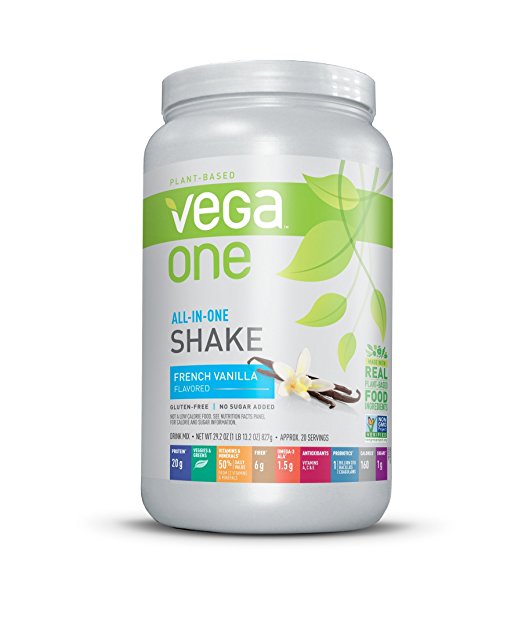 After all my research, I determined the following were keys to success in raising iron levels:
After all my research, I determined the following were keys to success in raising iron levels:
- Spread the supplements out through the day, to avoid causing stomach upset. Taking two capsules at once when I missed a dose caused more harm than good — nausea, etc.
- Take the iron supplements with Vitamin C, which increases your absorption (hence the apple juice)
- Make sure you take the supplements on an empty stomach — one hour before or two hours after food
- Avoid caffeine for at least an hour before/after you take the iron supplement, because it will inhibit absorption
- Do not taking any other supplements or herbs within an hour of taking the iron
2021 Update
For the past several years, I’ve been using Vega meal replacement shakes, in conjunction with the Palafer. Iron supplements alone weren’t enough to get me to the 110 ug/L level that was always my goal. It was only after I started drinking the Vega shakes five times a week that my iron levels hit my target zone. I’ve been able to cut back significantly on the Palafer as a result, which has been a great thing.
The Vega shakes don’t taste great (though they have improved a lot over the years!), but if your dietary habits are less than ideal (mine certainly are) it’s a great way to get the iron you need without any side effects.
The first few days on a high-dose iron supplement can be tough (nausea and constipation are common). The tummy upset passed fairly quickly, probably in the first two weeks. And I coped with the constipation by eating Fibre 1 bars as snacks — they are tasty and they work!
I apologize for the length of this post, but I wanted to provide as much detail as possible. If even one other women finds that iron stops hair loss, it will have been worth it.
If you still want more info, you can read more about how you can use iron to slow or stop your hair loss here.
Good luck!

